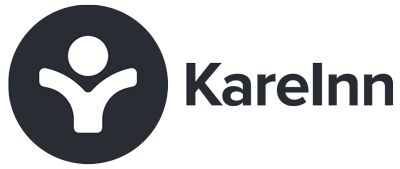MY WHY?
People often ask me why I co founded KareInn. What are my personal motivations for putting myself through the mill of building a tech startup in the care industry? A largely paper based industry that doesn’t have tech startups. It’s fraught with risks, inconsistencies and countless highs and lows. Surely it’s a crazy idea for someone in their 40’s with a wife, two children and a mortgage? And anyway it’s a young person’s game, right?
A Story
So what is my why? The best way is for me to tell my story.
In the winter of 2006 my large family gathered for Christmas. My 3 brothers and sister were all at my parents house for lunch. Everyone was excited, especially the grandchildren. My mother was an exceptionally organised, busy (and bossy) person – a real matriarch. However this year I sat next to her and noticed how quiet she was over lunch. She would take ‘just’ a little longer than normal to talk. Not enough to notice at the time, but obvious with hindsight. No one realised anything was wrong at the time.
“My mother was an exceptionally organised, busy (and bossy) person – a real matriarch. ”
A few weeks later she was driving my niece and nephew back to their home. On her return she forgot where she was going and had to ring my dad. My father is a doctor and he was obviously concerned. We thought that she might have had a minor stroke. So she was referred into the NHS and went in for an MRI scan. Then she waited. We waited. We fully expected the scan to show that she had had a minor stroke and a period of recuperation would be needed. She was 60 years old.
“It was at this point that the family abruptly became her carers.”
The results couldn’t have been more different. The results came back showing a tumor on her brain. No specifics, those would take another week as the team needed to review the scans. A week! Her life was placed in a holding pattern and the rest of the family entered a shock that hasn’t fully dissipated almost 10 years later. It was at this point that the family abruptly became her carers.
The first thing I did during that week, was a Google led crash course on brain tumors. Did you know there are more than 130 types? I have now come to realise that the best carers are the ones that are well trained in the specific conditions affecting the people that they care for. I worked out based on the imaging and her profile that it would be either a benign Meningioma (best outcome) or a Glioblastoma Multiforme (the worst type of tumour, with a 3-6 month life expectancy). We held our breath whilst trying our best to care for our mother.
“The best carers are the ones that are well trained in the specific conditions affecting the people that they care for”
When the doctor gave my mother and father the news we all feared, a Glioblastoma Multiforme, it was almost impossible to bear for us all. But the strange thing was that she was pragmatic, almost accepting of her fate. We all knew this was a terminal prognosis and in amongst the scans, chemotherapy and radiotherapy, we all rearranged our lives to be carers for our mother.
Life was further complicated by the fact my brother and his wife were having their first baby. She never said it, and nor has my father, but I’m convinced she discussed her treatment with the doctor and aimed it squarely at getting to see her grandchild. She also wanted to be at home with her family as much as possible. It was obvious, to me, that all our energy and focus should be on providing the best care possible for her.
“The last thing she wanted to do, whilst having to consider her mortal coil, was to coordinate the people around her. At the time I thought that there had to be a better way, but only now understand what that is. ”
Coordinating care
The first thing I noticed was that the coordination of care was too reliant on my mother. In the first few weeks, during what I call the hospital / chemo phase, she would need to interact with radiologists; oncologists; surgeons; nurses; dad; 5 children; 2 brothers; friends; other family; and various hospital staff. Each had her best interests at heart, but each had to ask her the same mundane questions. Whilst individuals tried their best to coordinate care around her, it always ended up with too much being required of her to achieve this coordination. This was because they all used different processes to track her care. How this worked in reality was that everyone would have to ask her to bring them up to speed each time they interacted. So she would end up coordinating! The last thing she wanted to do, whilst having to consider her mortal coil, was to coordinate the people around her. At the time I thought that there had to be a better way, but only now understand what that is.
So following an aggressive bout of chemo that took every ounce of energy she had to get through, we took her home. This was where she wanted to be. It was a good time, as far as it could be. We did things that at the time were minor, but in hindsight gave her a great deal of dignity. We purchased 10-15 hats for her to try on to find the one she liked the most, as she was nervous about her hair falling out. The one she chose, she ended up wearing everyday. She was where she wanted to be, surrounded by the people that cared about her most. During this time a different set of wonderful people helped us care for her. The incomparable Macmillan nurses; local authority staff; the GP; people delivering wheelchairs and specialist beds; family; friends. The list goes on and on.

“The resources are out there, but you have to locate it which takes considerable time. There should be a way of coordinating this information based on the specific conditions of the care receiver.”
Understanding needs
But again there were frustrations with how we all cared for her. Too many mundane things still required her to do the coordination and it just shouldn’t be like that. Secondly there are great resources out there that make care easier, but finding it required considerable time and effort. It then required dissemination and education amongst all of us. For instance my mother’s condition meant that she lost the ability to speak. It once took me an hour of perseverance (and immense frustration for my mother) to identify something that was bothering her. I literally tried everything. This would repeat itself over and over again. But for some unknown reason she was able to ‘sing’ answers. ‘Noooo’ being her most popular. It was only a year or so later that I found out that speaking and singing come from 2 different parts of the brain. So if speaking is a problem, get them to sing. I often think about how much better her care would have been had I known that at the time. The resources are out there, but locating them takes considerable time. There should be a way of coordinating this information based on the specific conditions of the care receiver. So if we know that someone is female, 60, and has Glioblastoma Multiforme, why not automatically put relevant information in the hands of the carers? Its a simple and a key element of care.
“Everyone will die one day, but too often it is without dignity”
Dignity
But the single most important part of care is dignity. It’s a fact that everyone will die one day, but too often it is without dignity. It’s a tremendously hard thing to give someone, when faced with debilitating illness. I had to learn to take my own mother to the toilet; provide the basic process of life for her; help her into wheelchairs; try to help her communicate; and give her as much independence as possible for her last few months. All this with dignity. It’s really very hard, but we did it. Nothing makes me more proud. Carers up and down the country are trying to do this day in day out, but they are hindered by poor process and rudimentary support. I’ve come to realise that the best path to achieving this dignity is to maximise quality human-to-human interaction, and for the carer to understand both the individual’s needs and the specific conditions that affect them. To enable this, there must be powerful coordination operating in the background to free people from the mundane burdens that currently take up most of their time. This is where KareInn comes in. Everyone deserves the same level of dignity that we were fortunate enough to be able to provide for my mother.
“The best path to achieving this dignity is to maximise quality human-to-human interaction, and for the carer to understand both the individual’s needs and the specific conditions that affect them”

My mother died on a sunny day in the August of 2007, at home. She got her wish to meet Lucas, her new grandchild and spend time being a grandmother to him. Her last months were at home or in the garden surrounded by her family. With dignity. Caring for her was one of the hardest things I will ever do. It has shaped my thinking on the care industry and how things should be transformed to ensure that carers, whether that be in residential care homes or in their own homes, are given the opportunity to provide dignity to as many people as possible.
Alex




